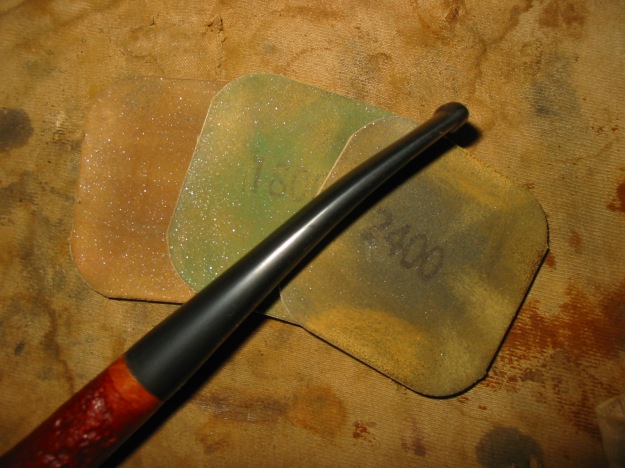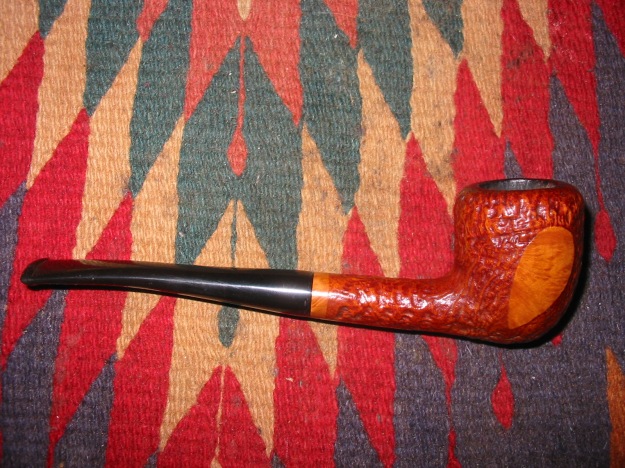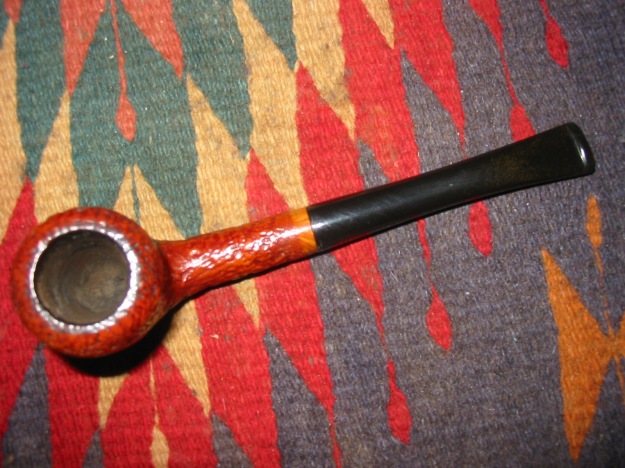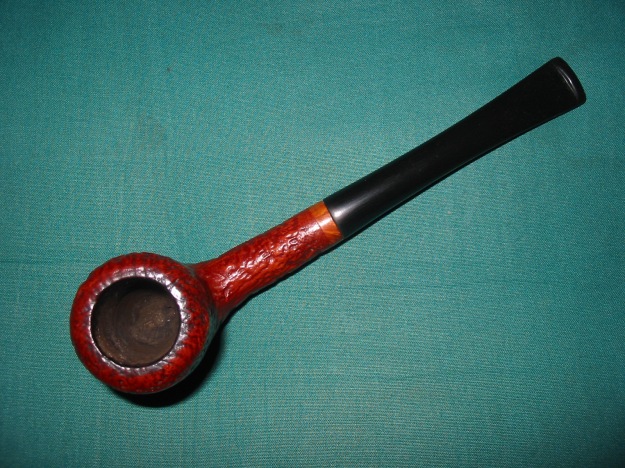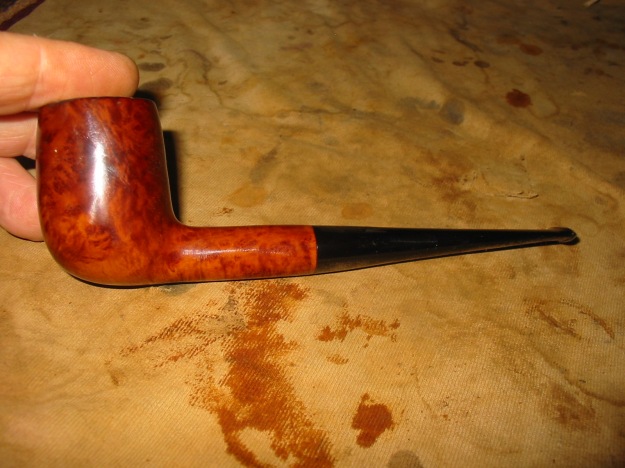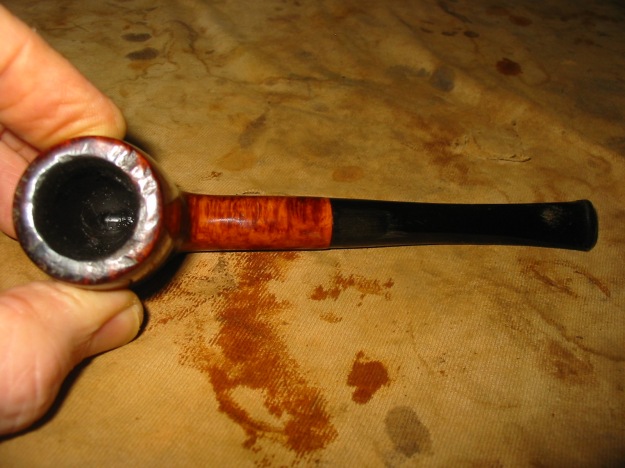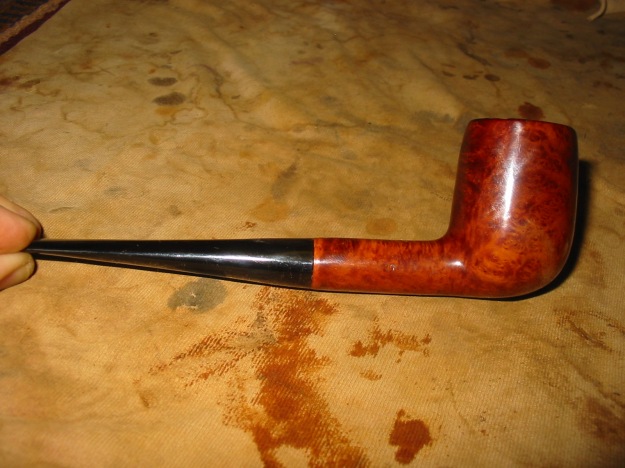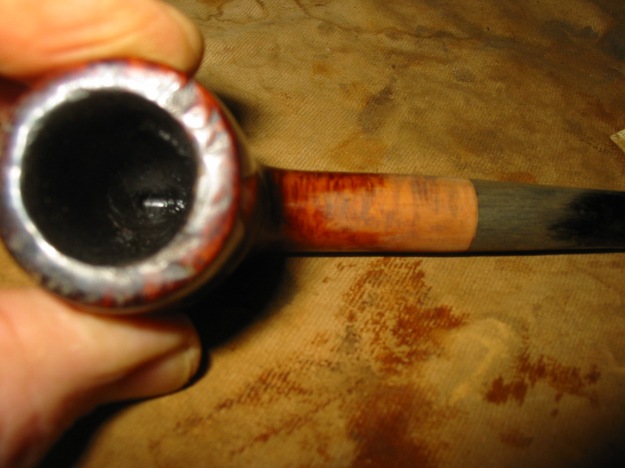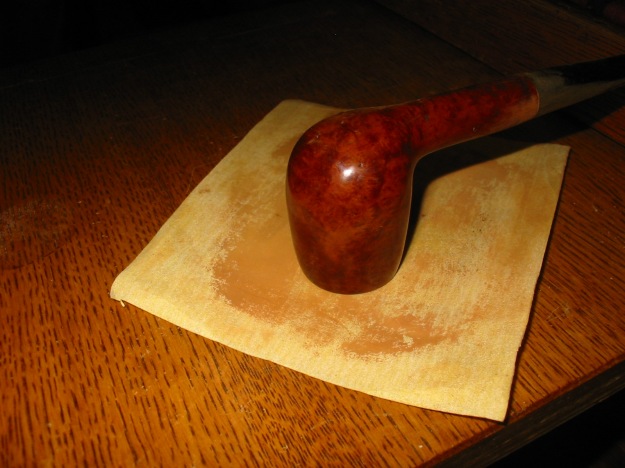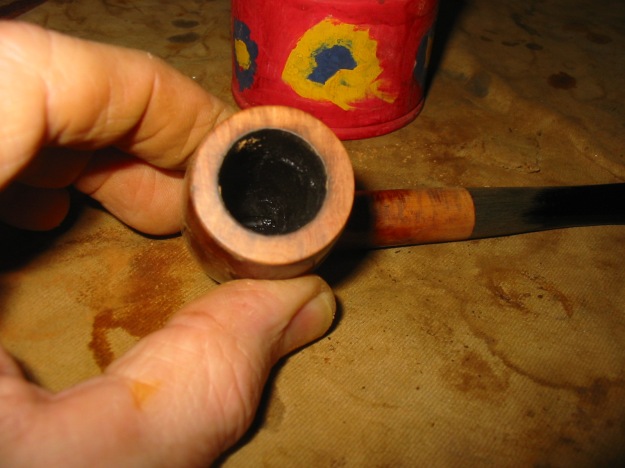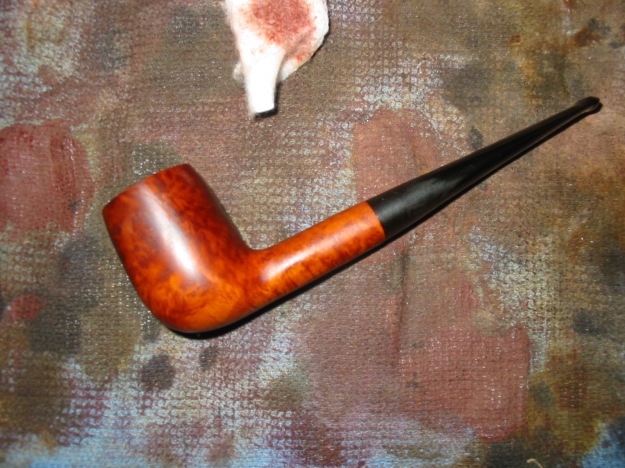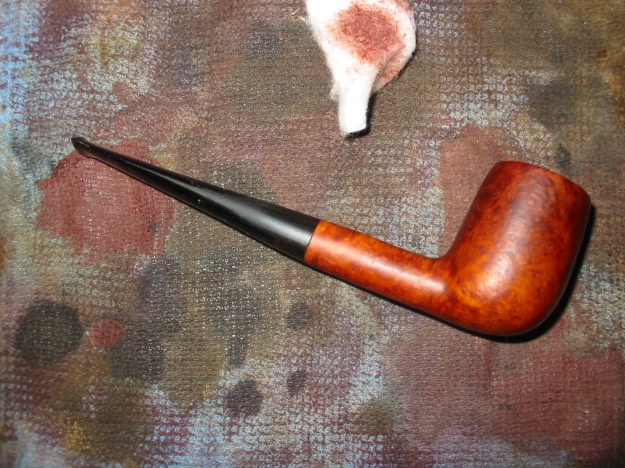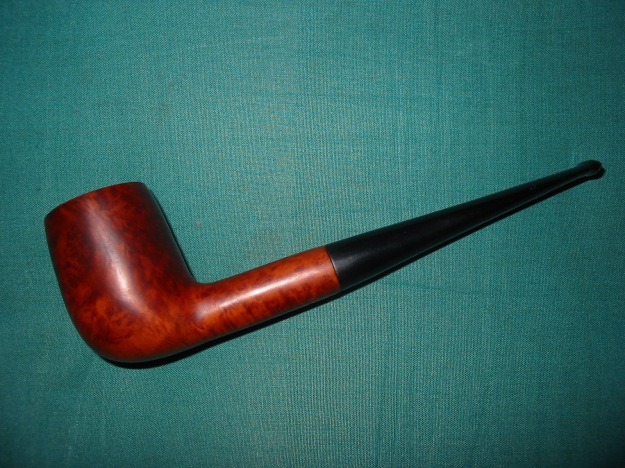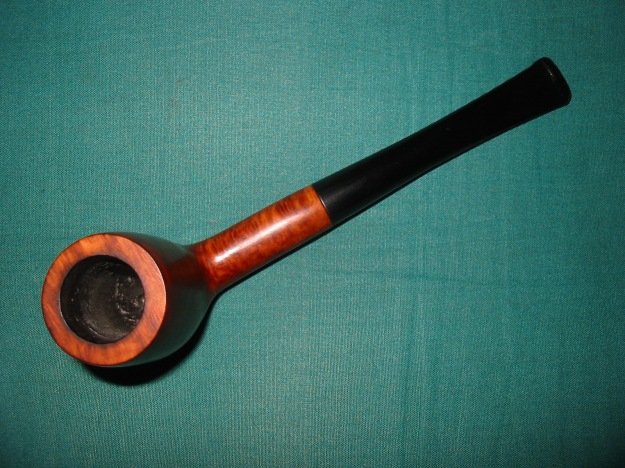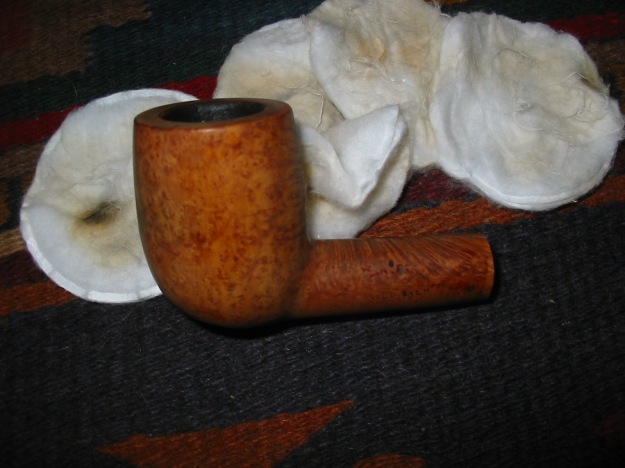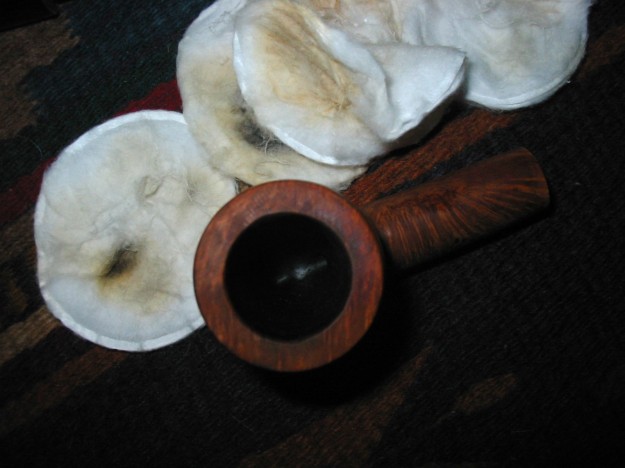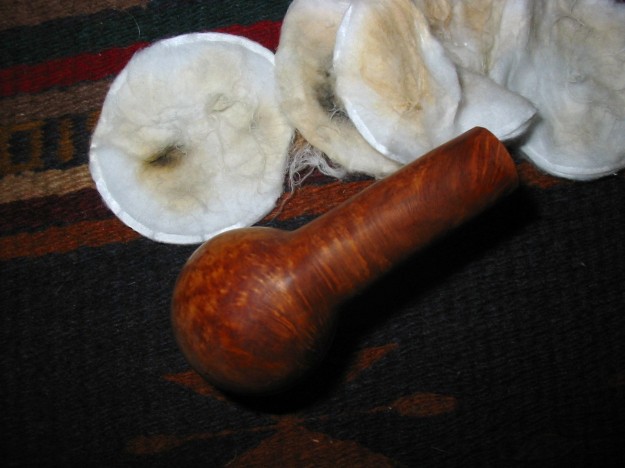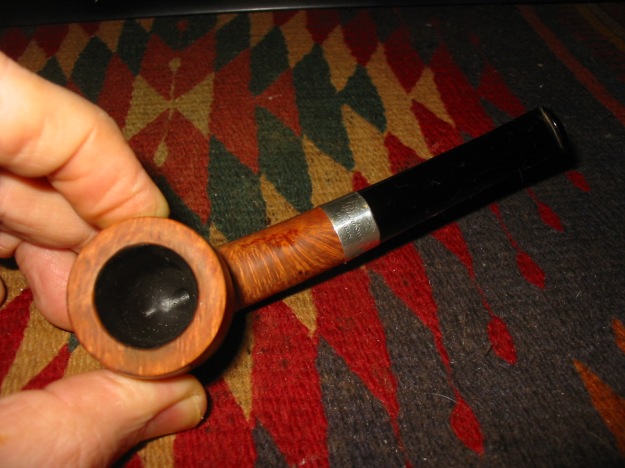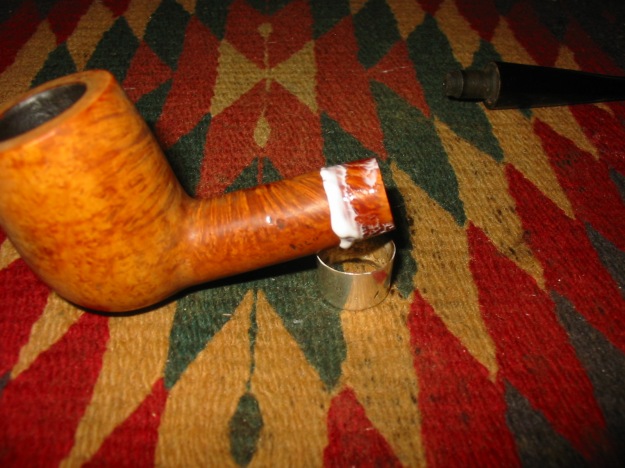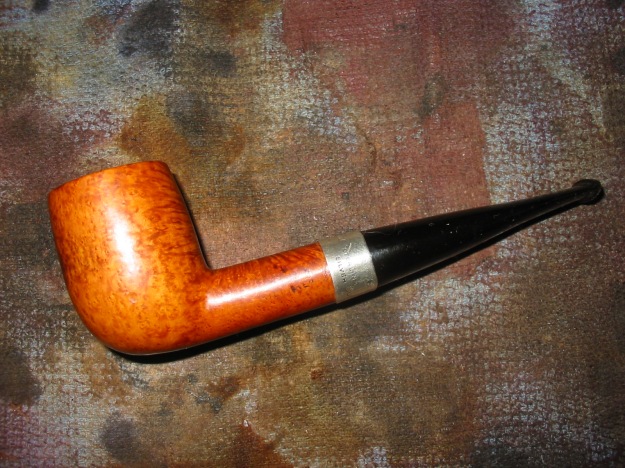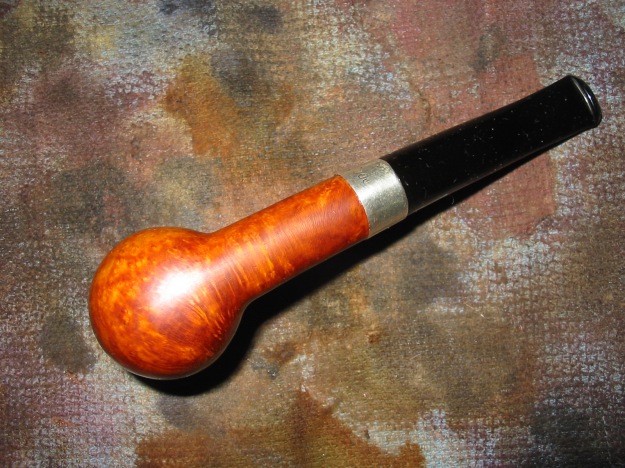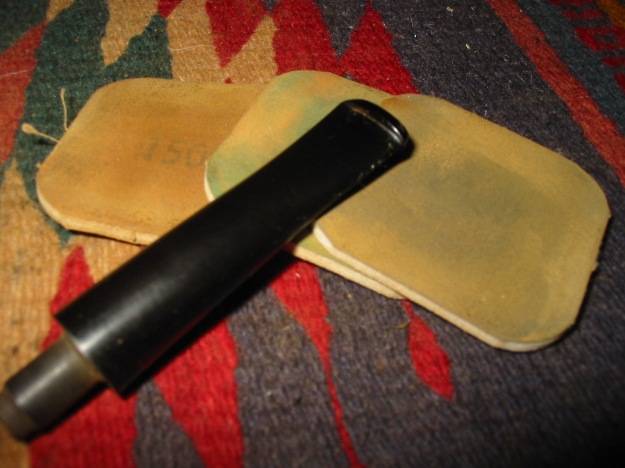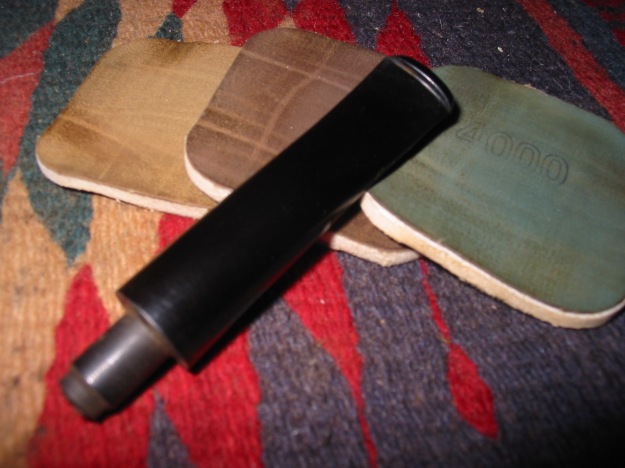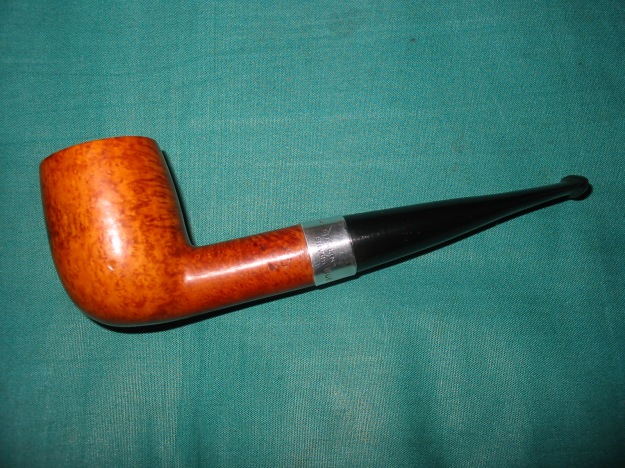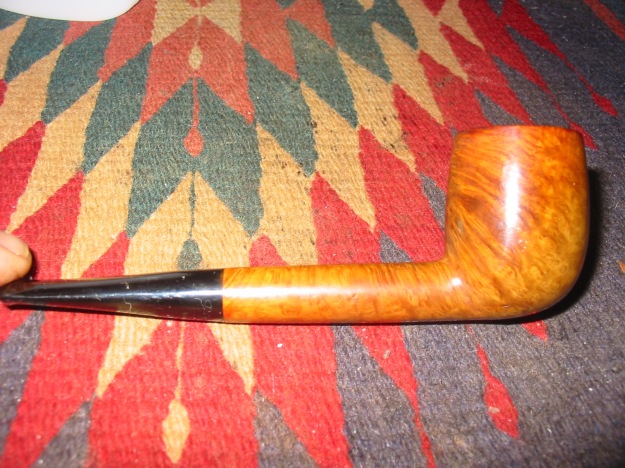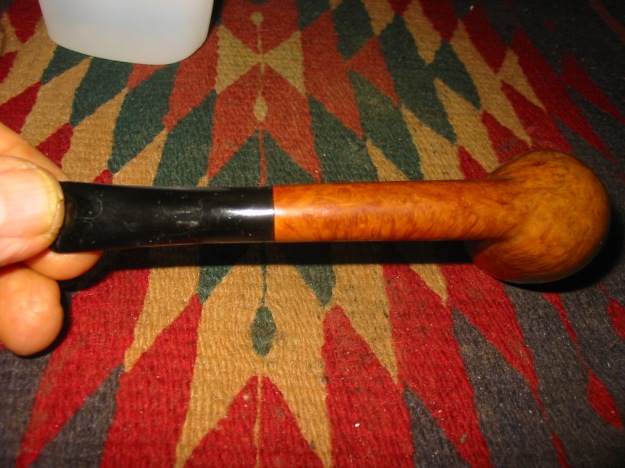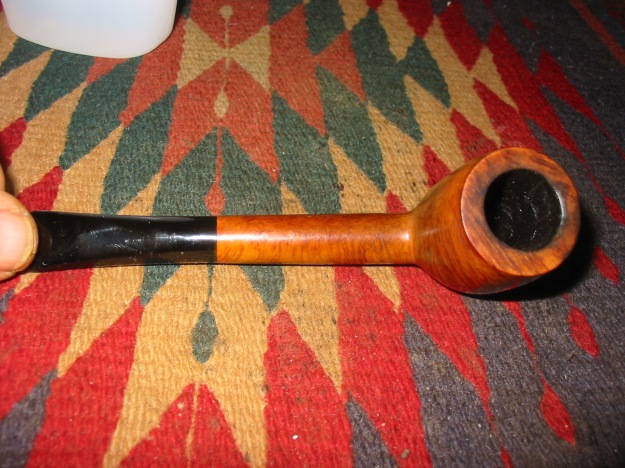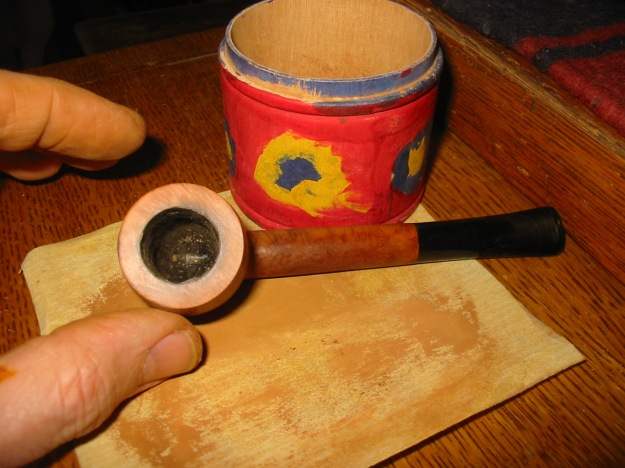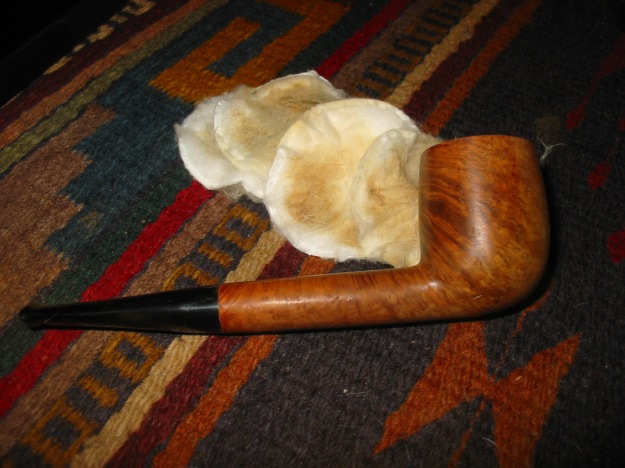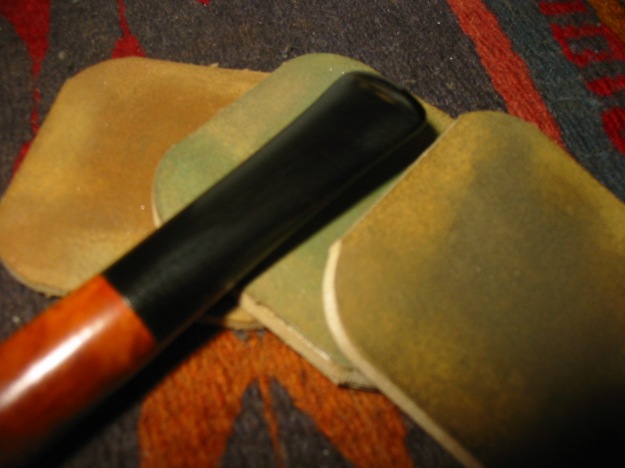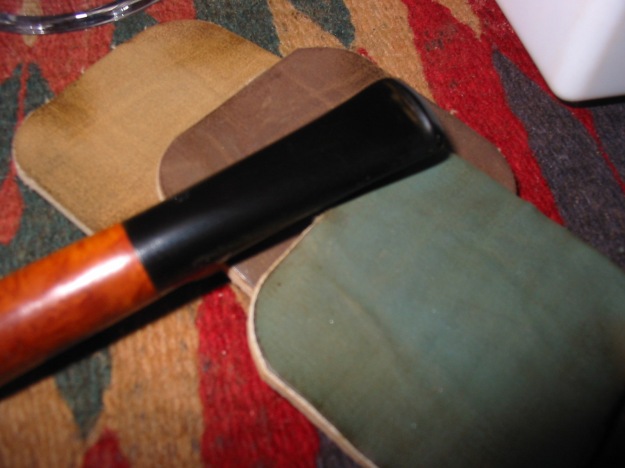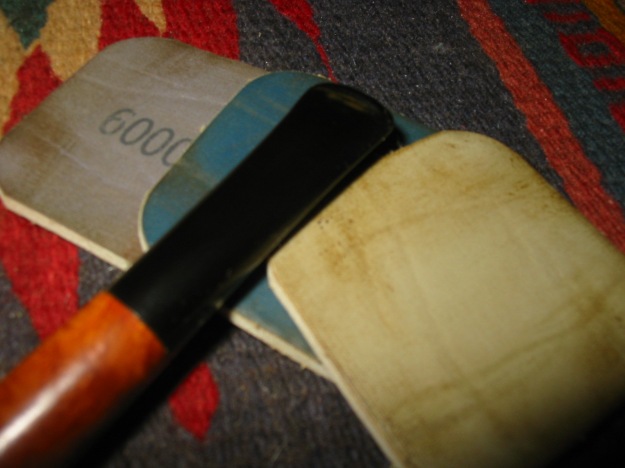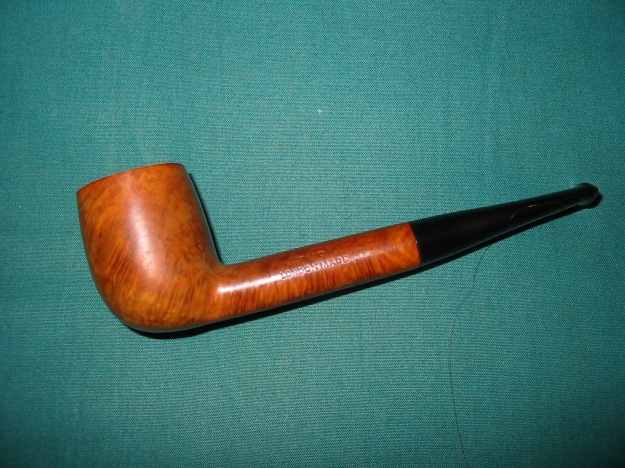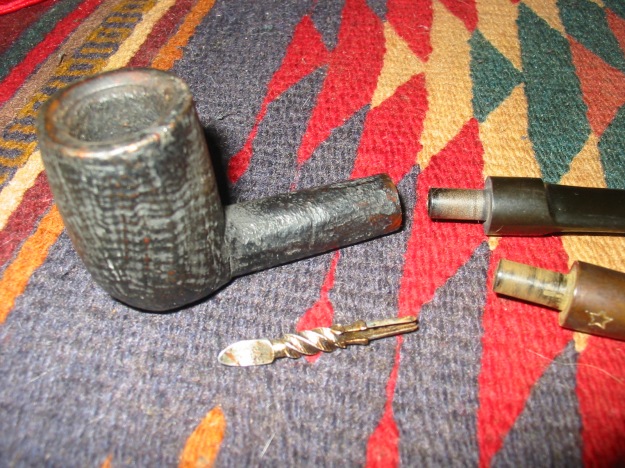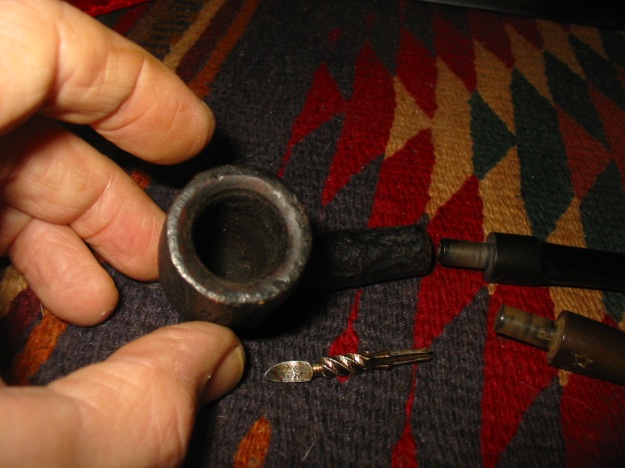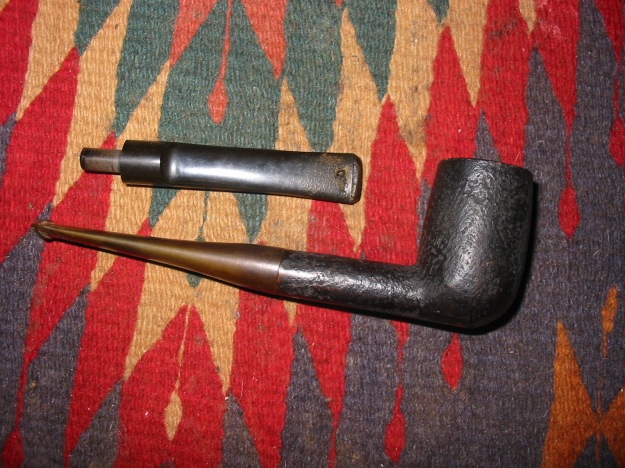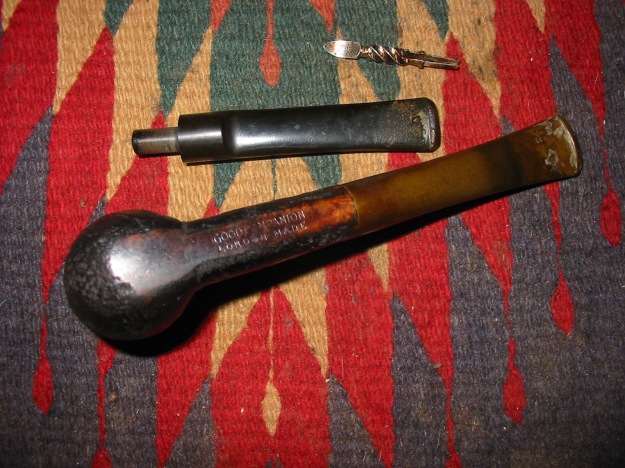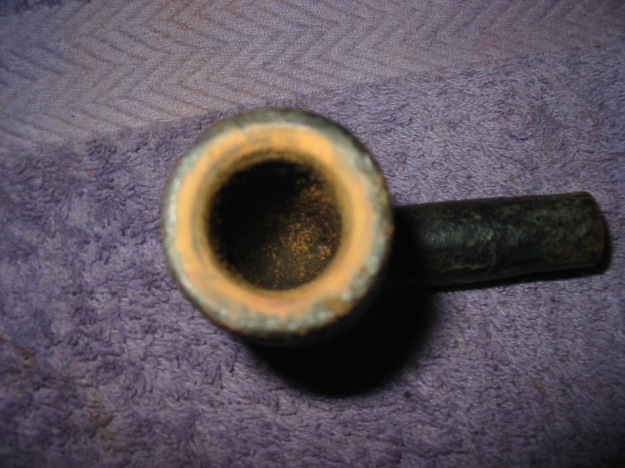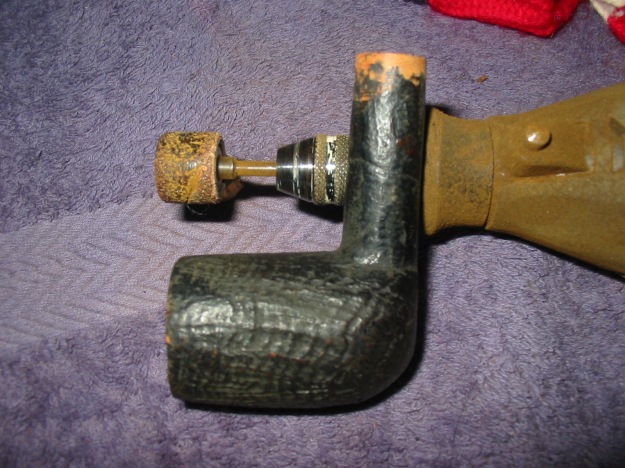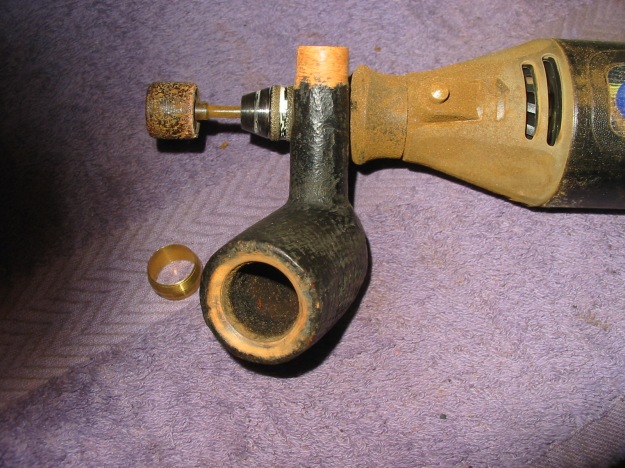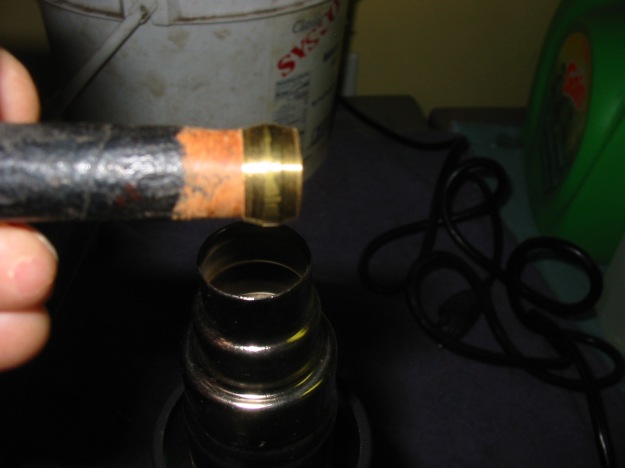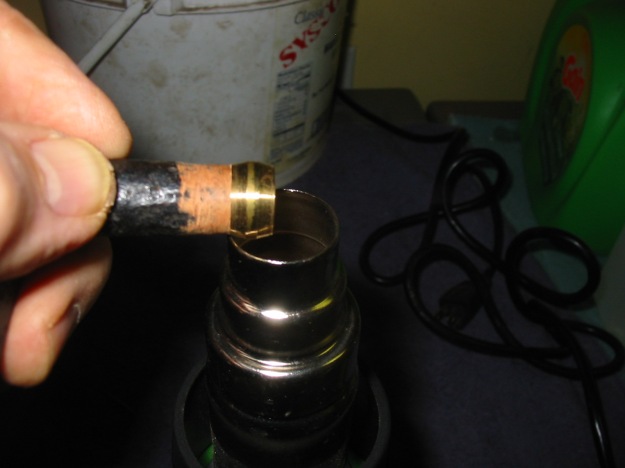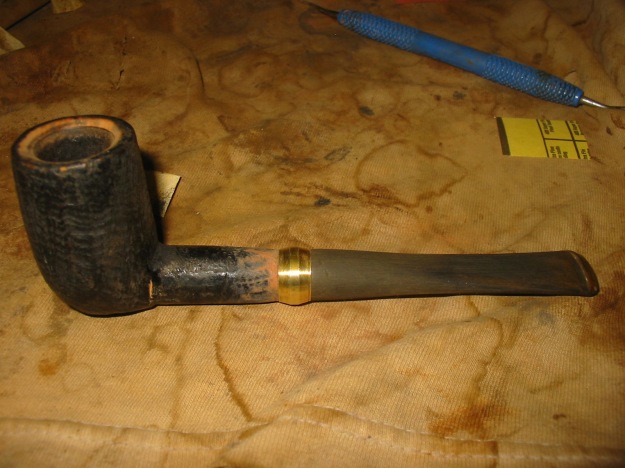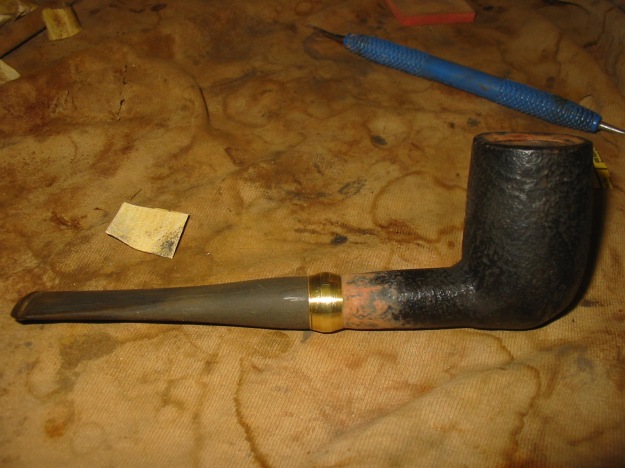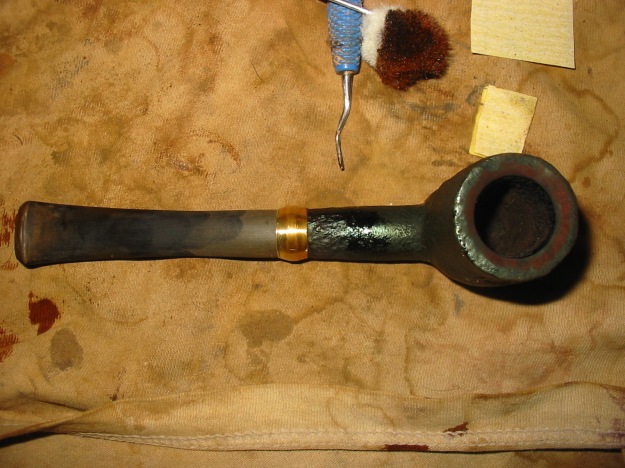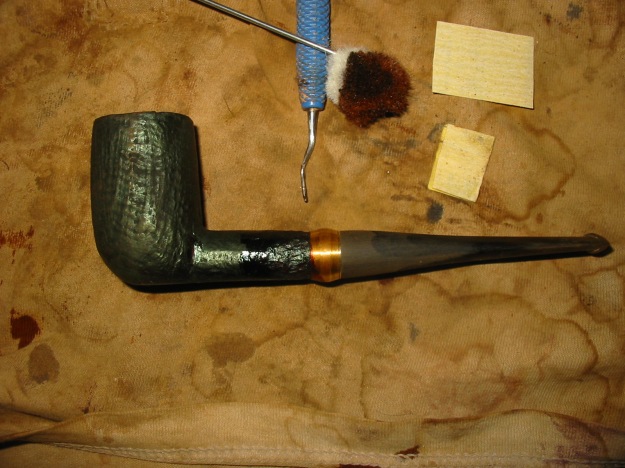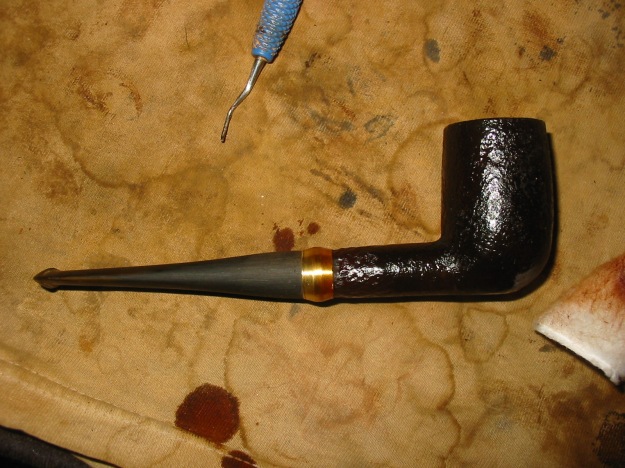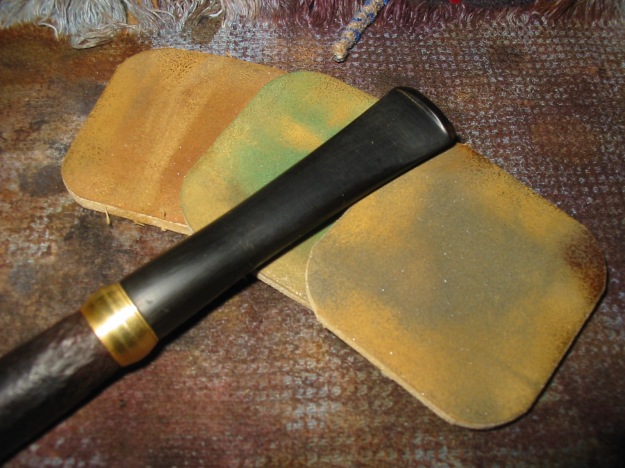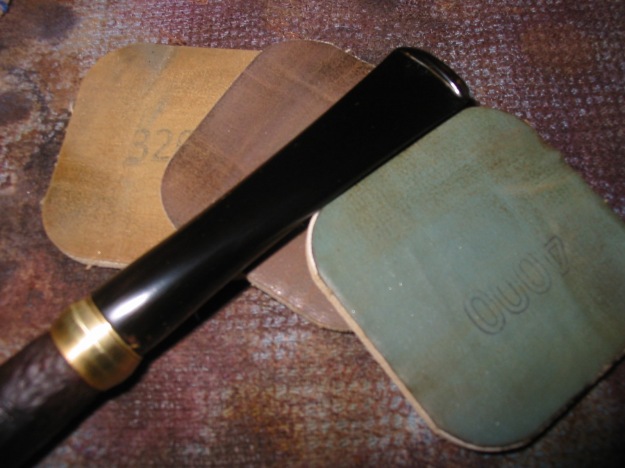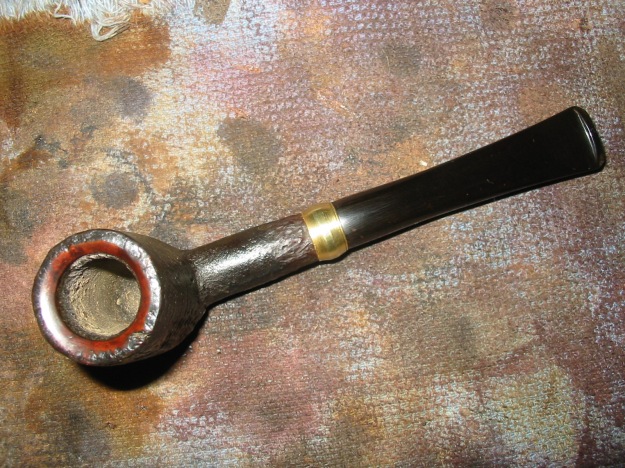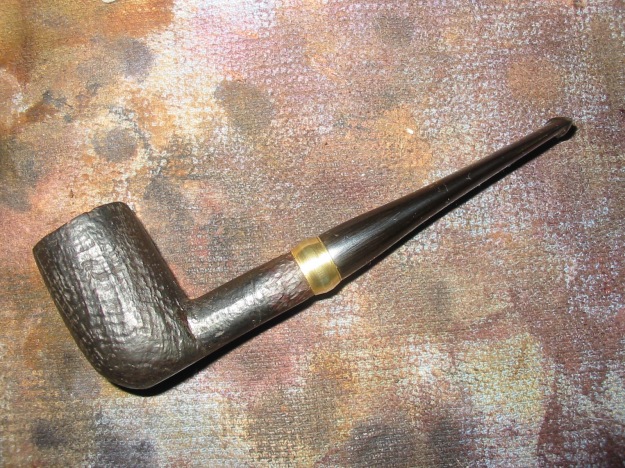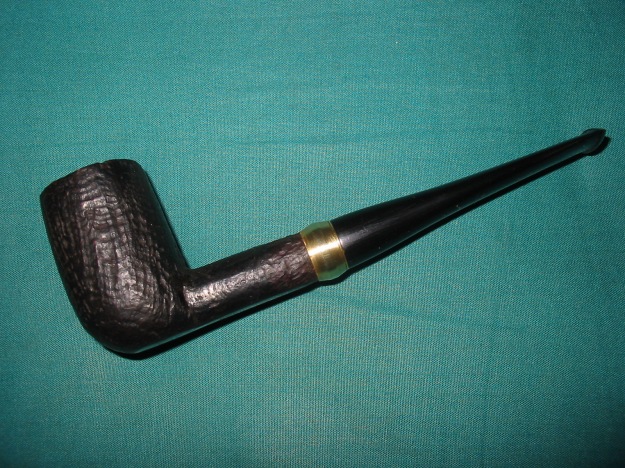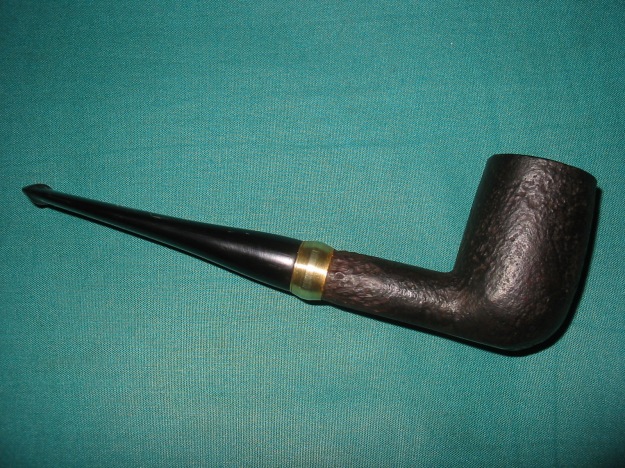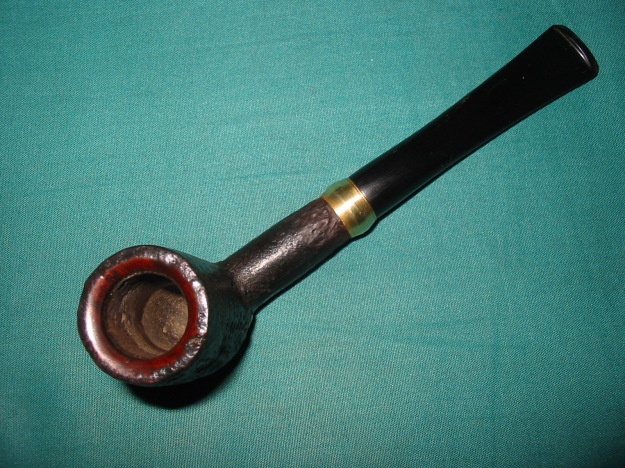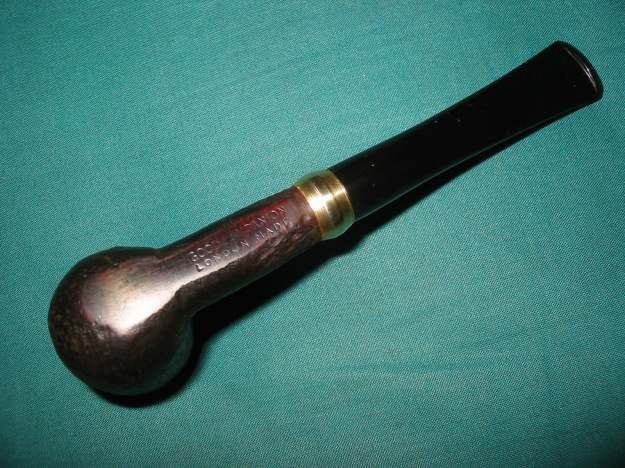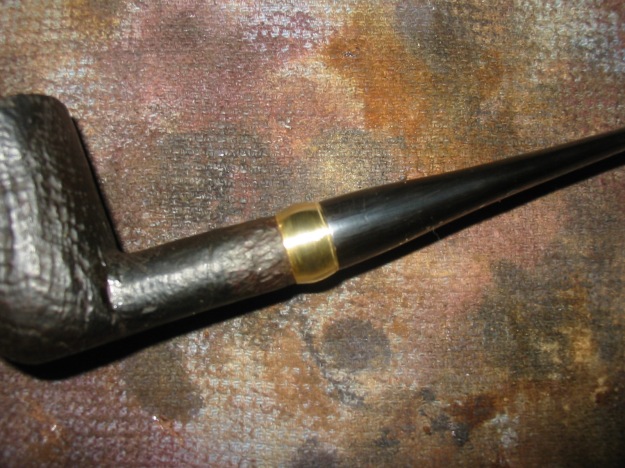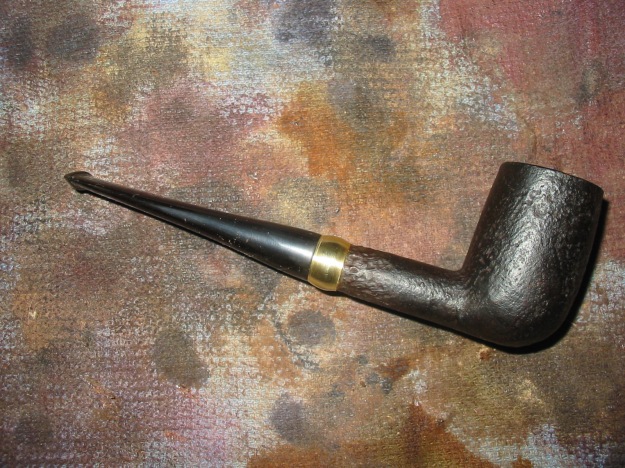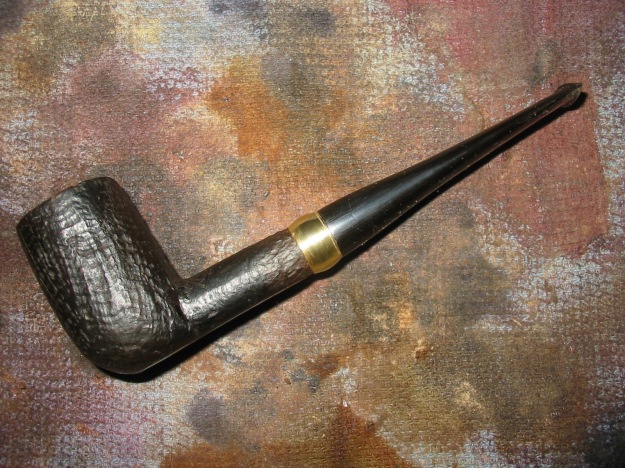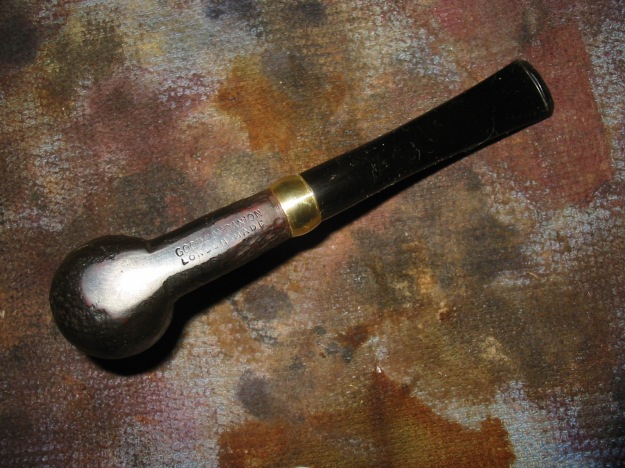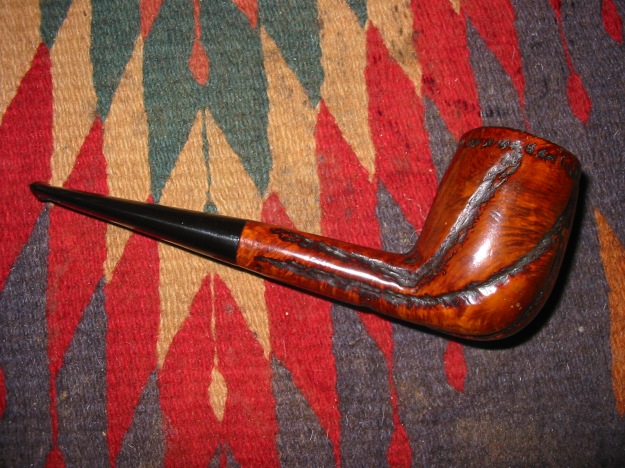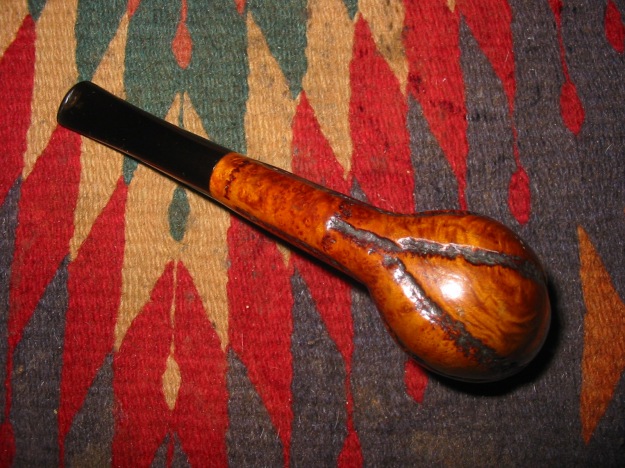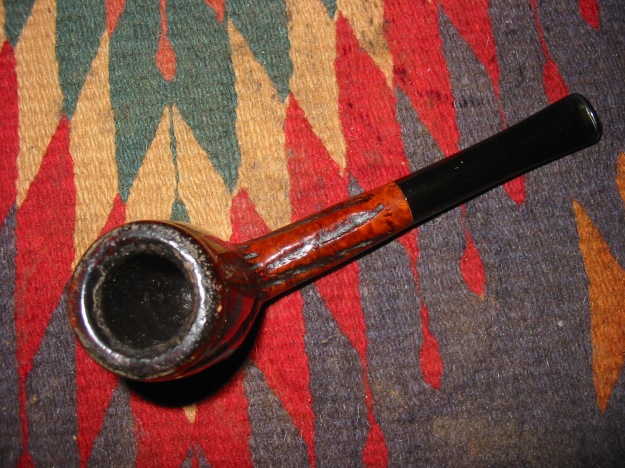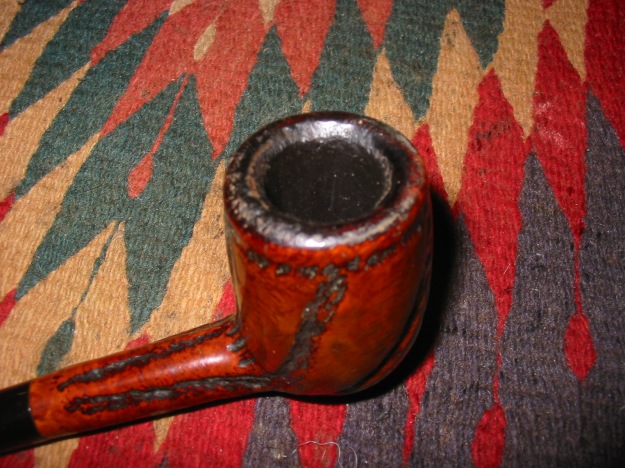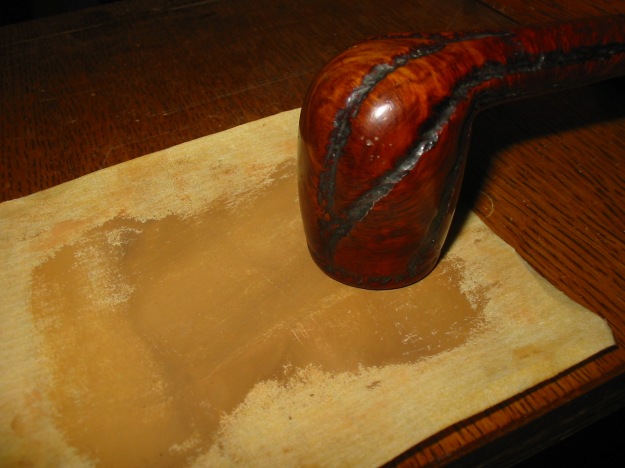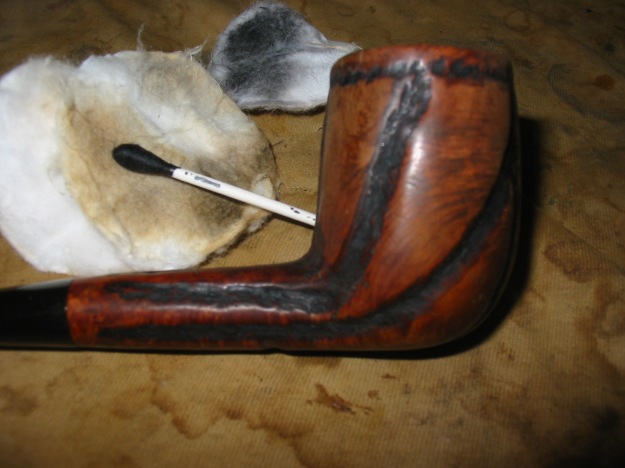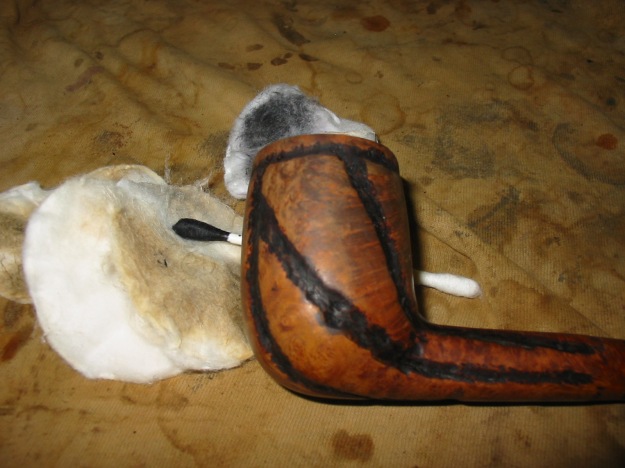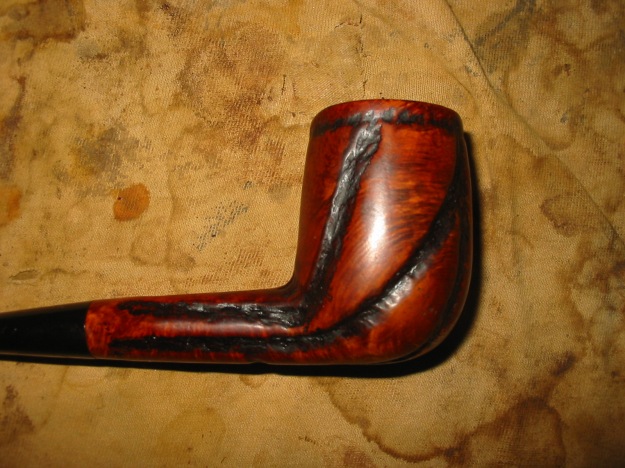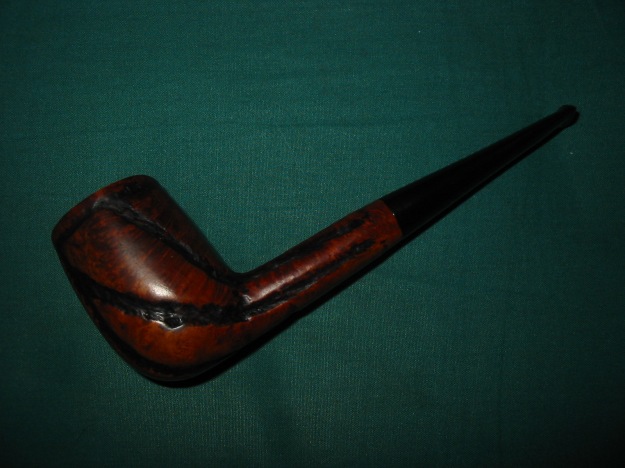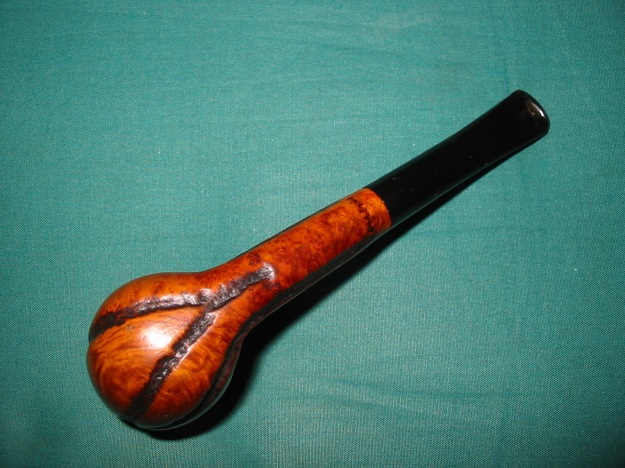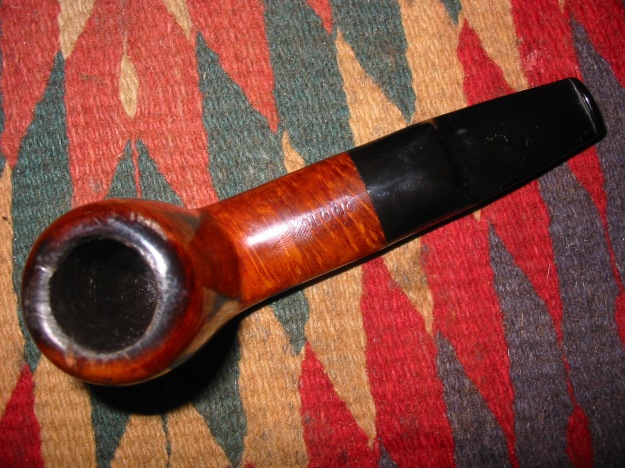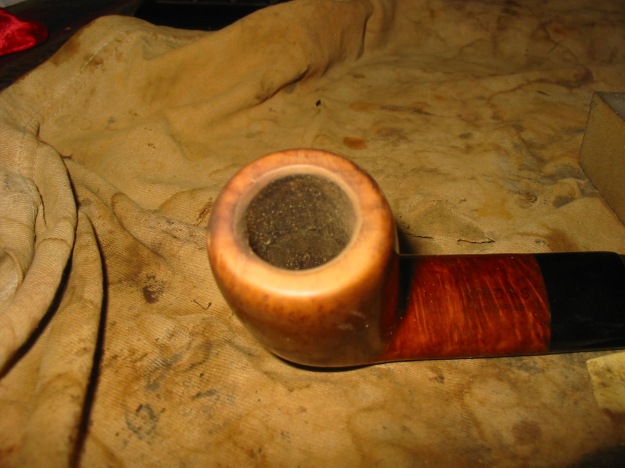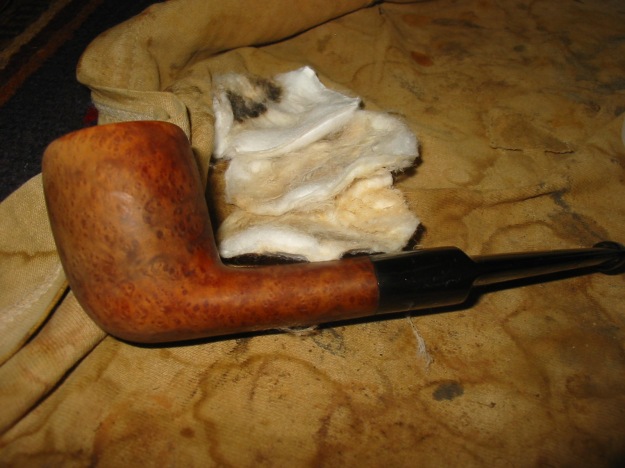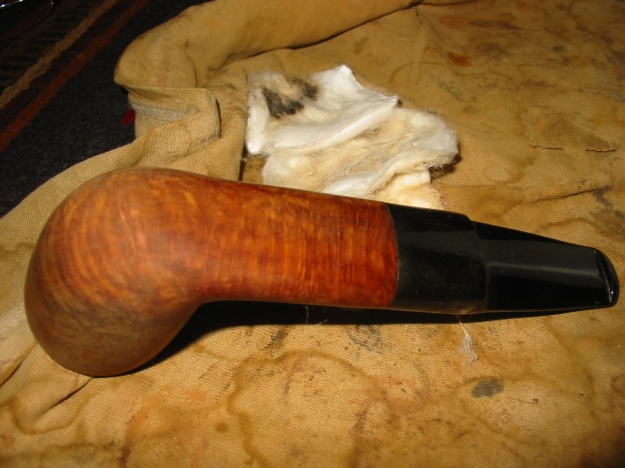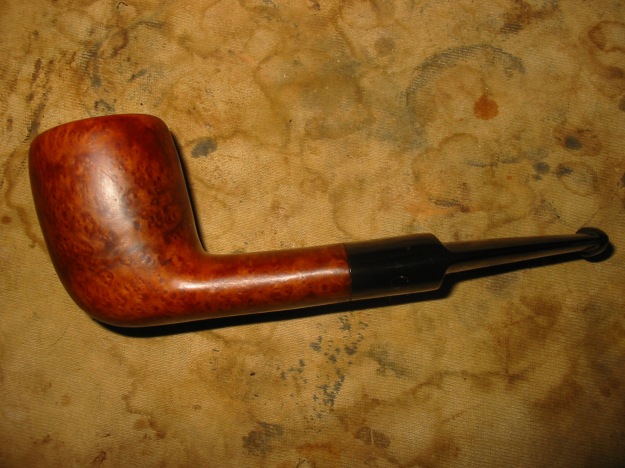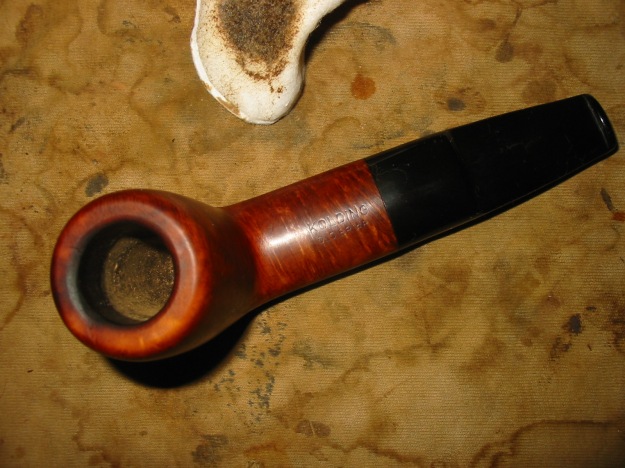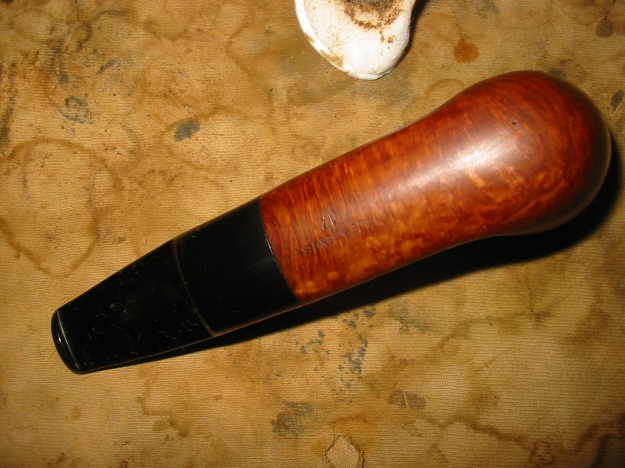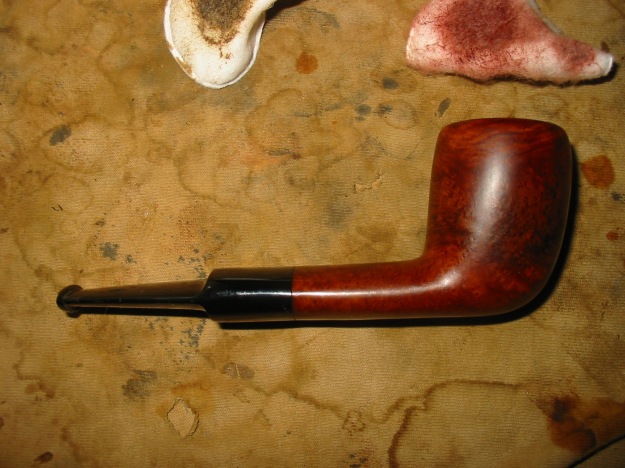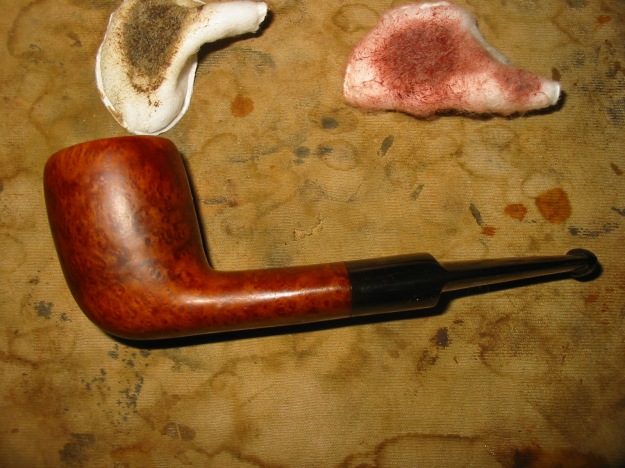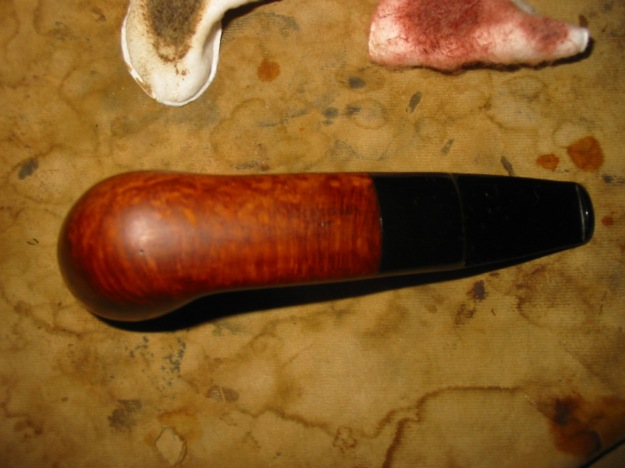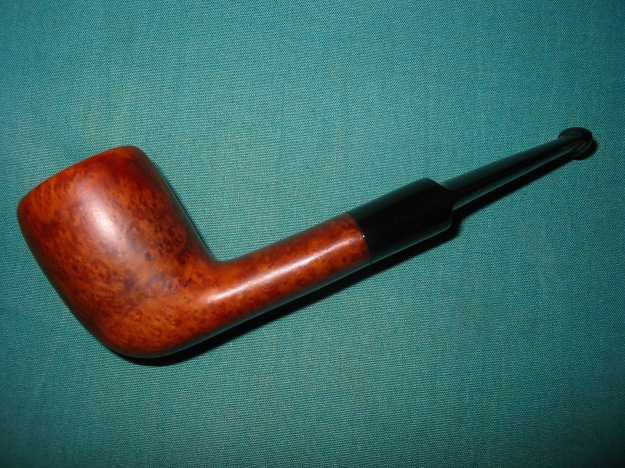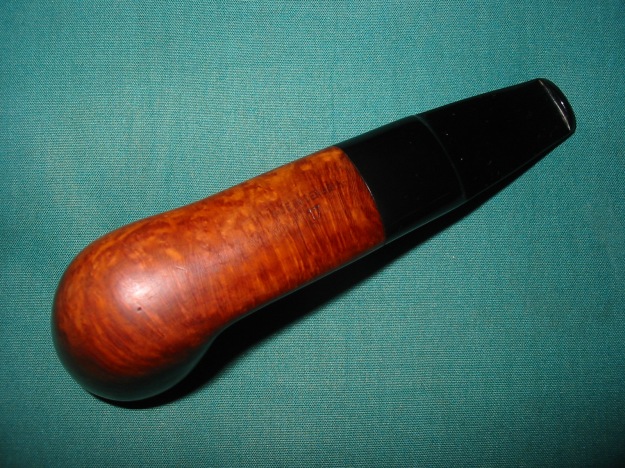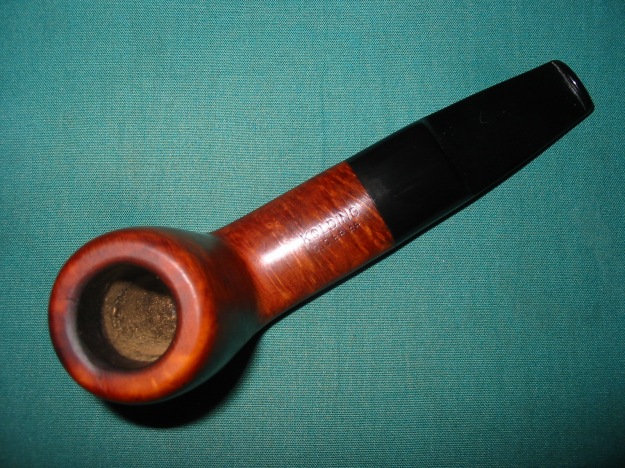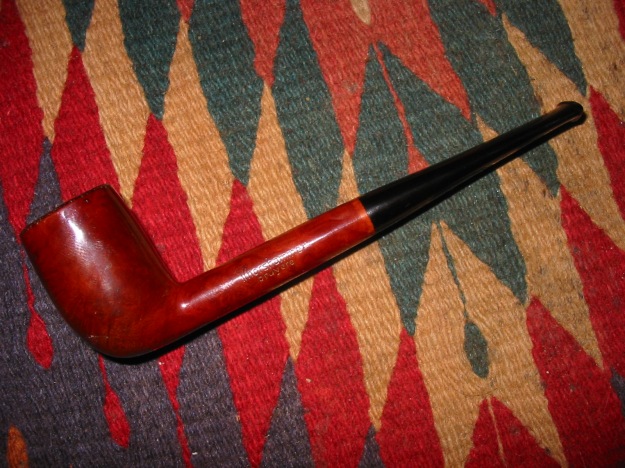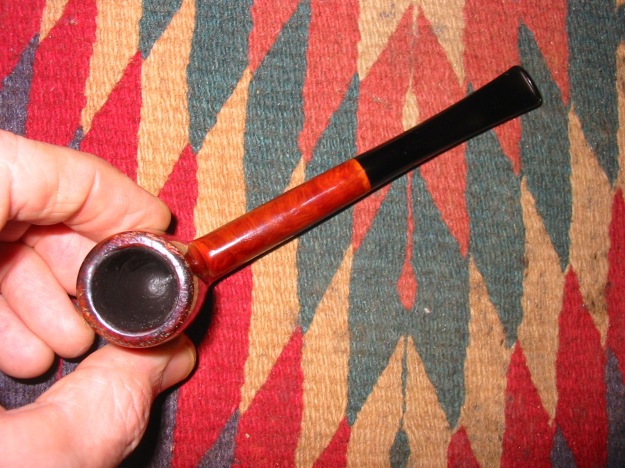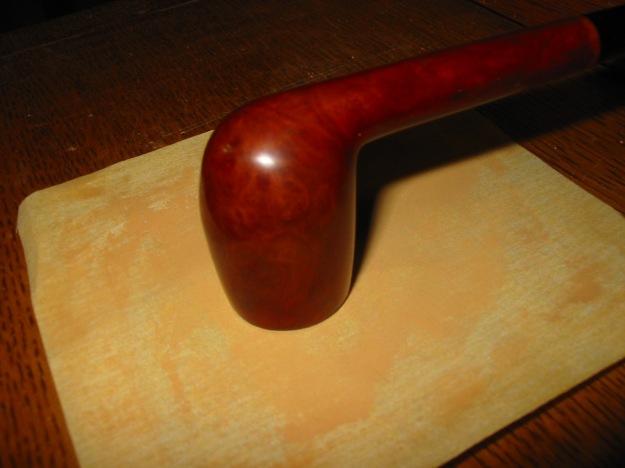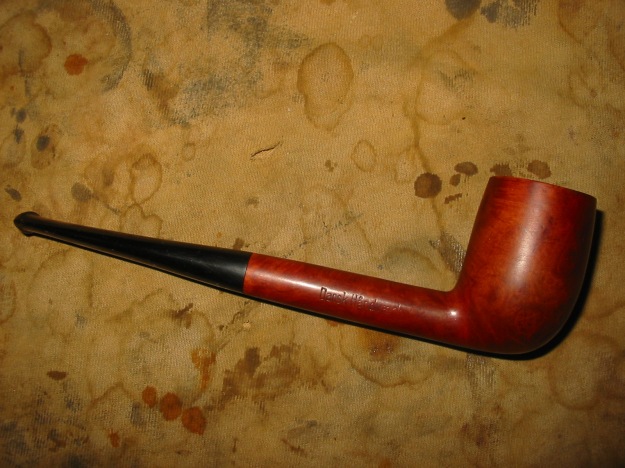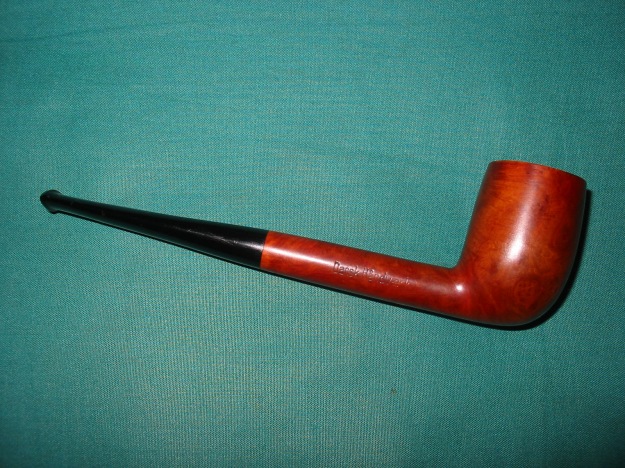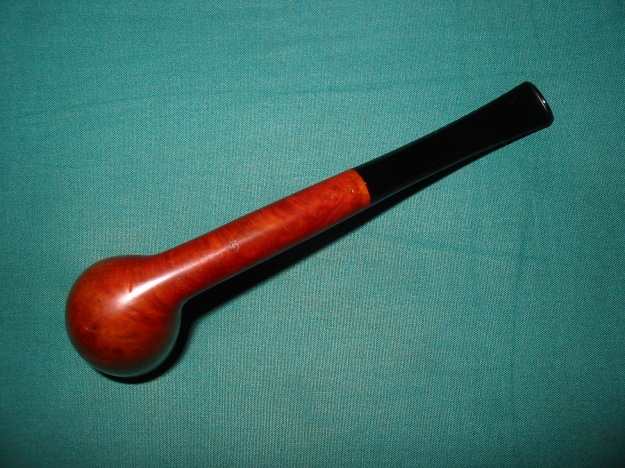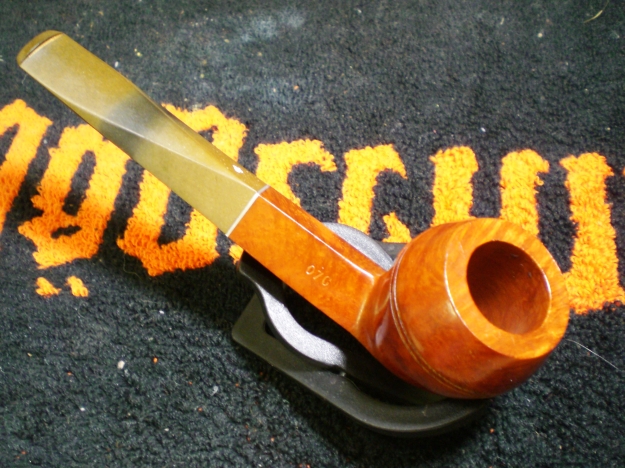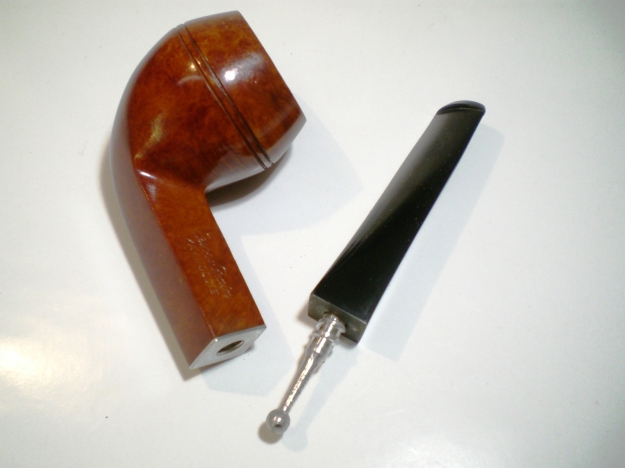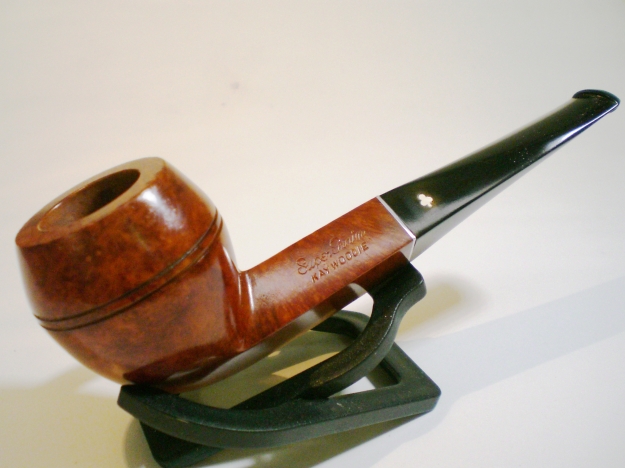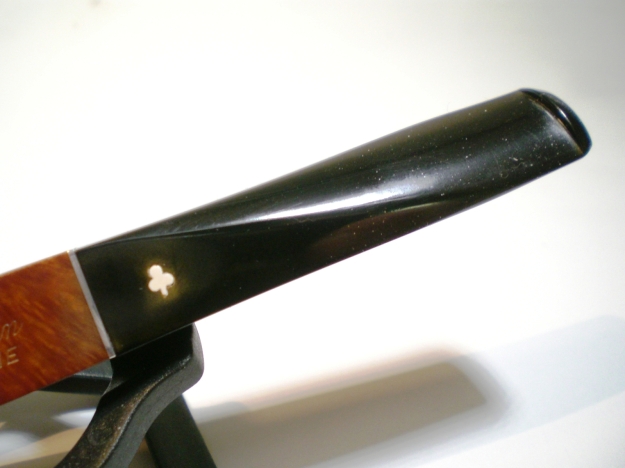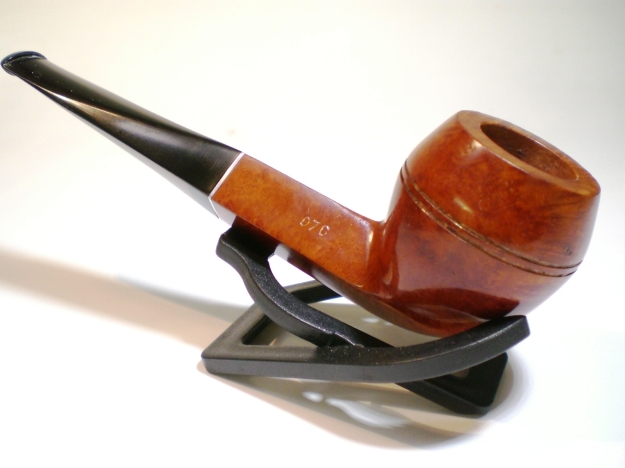I am following Cody on Twitter and yesterday when he posted the final picture in the article on the before and after on these pipes and a teaser on where they came from I wanted to know the whole story. I wrote and asked him if he would be willing to write-up the story and the refurb for rebornpipes. He quickly replied and soon sent the piece below. I am happy to have Cody write for the blog. Some of you will remember the name with the Moustache Man tamper piece I wrote a while ago. You can read about it at the link below. https://rebornpipes.wordpress.com/2013/11/22/a-review-a-cody-huey-moustache-men-pipe-tamper/ Cody has posted his contact information after the blog post. Have a look at his website store for the tampers he carves. Thanks Cody for being willing to write this up for us. It is great to have you here. Without further ado here is the article.
My wife and I were visiting her grandparents the other day. They are at the age where they are starting to hand down the precious items that they have collected over the years. As my wife and her mom were going through the rooms looking at figurines, paintings, and other things, I hear from the other room “Cody smokes a pipe”. My ears perked up then I was called to the front room. I heard, “Hey, take a look at these” as two full racks of old used pipes were sat down in front of me. I was told “take whatever you like, I won’t be smoking them anymore.” I was informed that all of these pipes are at least 50 years old and most of them were purchased at a smoke shop across from the University of Texas in Austin, TX. I asked if I could take all of them and was granted permission.


When I arrived home I started to go through all of them reading the names. GBD, Dr. Grabow, Rocky W. Germany, Aldo Velani, Penthouse (I thought that was a magazine huh who knew), Irwin’s, one meerschaum, and one Peterson. I started examining them closely to see how much work would be needed. I found that three had holes bitten through the stems but other than that some teeth marks, heavy amount of cake, and even heavier oxidation on the stems. My first thought was of all the people I have met that do restorations and how much it would cost to get these restored but, being the go getter that I am that thought quickly left my mind.

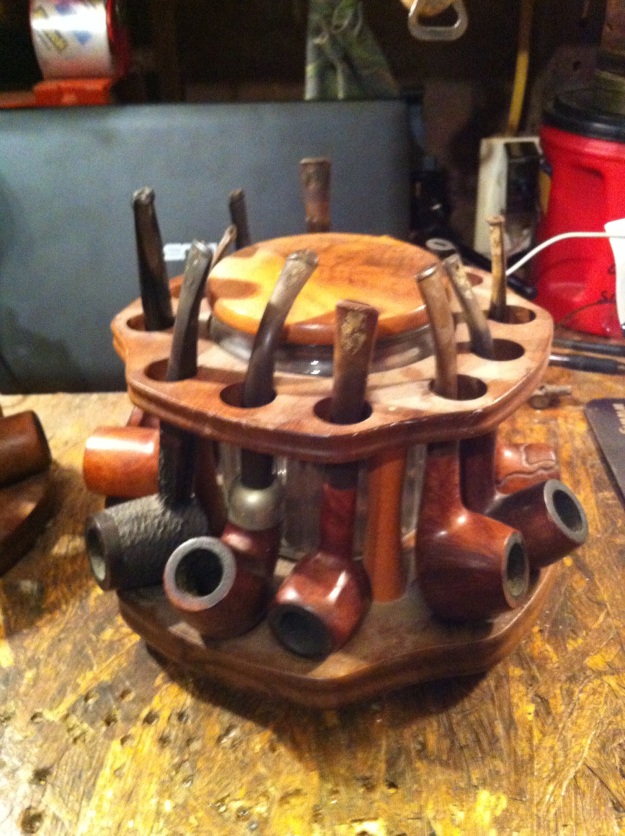
I then started to consume as much information as I could about restoring pipes. Reading tons of articles, many on this site, watching video after video, and digesting every piece of data I could get. After about 24 hours of nonstop information gathering I decided that I wanted to try to do this myself with very minimal materials. I would start with three pipes. The Materials used were as follows, a pocket knife, Oxy clean, bristled pipe cleaners, isopropyl alcohol, kosher salt, q-tips, my 6″ grinder converted into a buffer, Tripoli, carnauba wax, a polishing cloth, and some good ol’ elbow grease (which seems to be missing from a lot of people’s toolboxes these days but that’s a story for a different time).

I started with the bowls and a pocket knife. I scraped all of the cake out being careful not to go all the way down to bare wood. I also used the knife to ever so lightly (and I mean ever so lightly) scrap the char from the rims of the bowls. I then used the pipe cleaners dipped in alcohol to clear out the draft holes. Next was the q-tips dipped in alcohol to clean out the tobacco chamber. This took quite some time but I was very persistent with it.
I then proceeded to the salt treatment. Typical treatment, fill the bowls with salt, not packing it but keeping it loose, then dropping the alcohol in. I sat the bowls in a dish with rice to keep them at the right angle and let them sit for 24 hours. I ended up doing 2 salt treatments when it was all said and done just to get more of the nastiness out of the chamber.
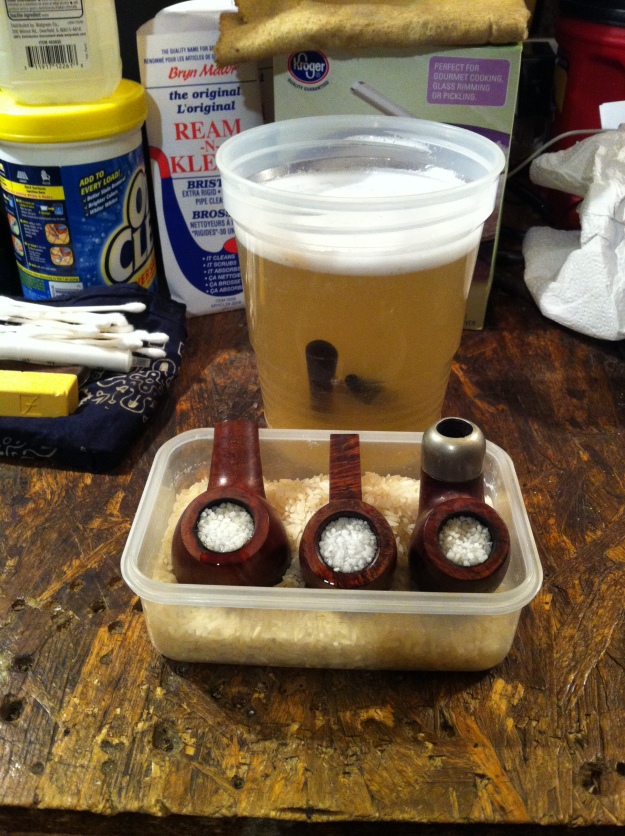
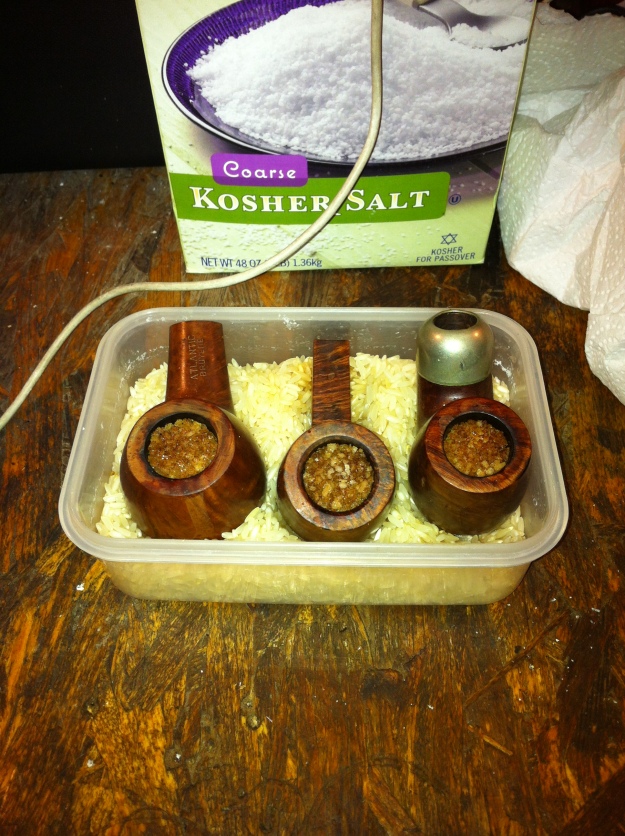
Next were the stems. Now when I say these stems had some oxidation I’m not kidding. These things were brown as a milk chocolate candy bar. I gathered a bowl, mixed in the oxy clean and proceeded to let the stems sit over night. The next morning I took them out of the dark beer colored water to discover that one stem was completely black now, one was a lighter shade of brown, and the last was half and half. I rinsed them off with water and rubbed them down with my handy cotton handkerchief (never leave home without it). I then started the second round of oxy clean concoction. I let these soak for about six hours and again the water changed colors but this time more of a light beer color. The black stem was still black, the dark brown was a lighter shade now, and the half and half was all black except for a small band of greenish brown at the base.
I took them out, repeated the steps as before and proceeded with the third round. I let them soak overnight this time and when I awoke, the water was almost as clear as when I began. The stems looked pretty much like they did after the second round of oxy so I proceeded to the next step, buffing. This is the part where I had to scratch my head a bit and figure out what exactly I was going to use to buff these stems with. I rummaged through my toolbox pulling out every kind of polishing compound and wax I could find.

Most everything I read is that white diamond polishing compound is the best but I didn’t have any and I wasn’t willing to order some and wait. Maybe next time. So I laid out all that I had. Dremel tool red polishing compound, the little yellow bar that comes with my Flexcut carving knives, and Tripoli. Wait Tripoli where the heck did I get Tripoli….oh yea it came with my waxes from Pimo. As far as waxes I had bees-wax and carnauba wax. I decided on Tripoli and carnauba wax.
I first started with the Tripoli. This stuff took all the brown and green off and put quite the shine on them. It took some time, going very slowly, trying to get into all the nooks and crannies but worked very well. Then it was on to the carnauba wax. Now this is where the real shine came on. I started with just the stems then attached the pipes and buffed the pipe in its entirety. The last step was just to give them a wipe down with the polishing cloth (which came from my high school days as a trumpet player) and that was it.
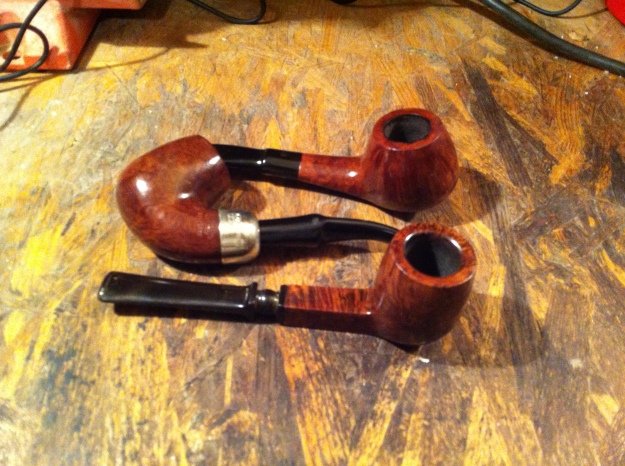
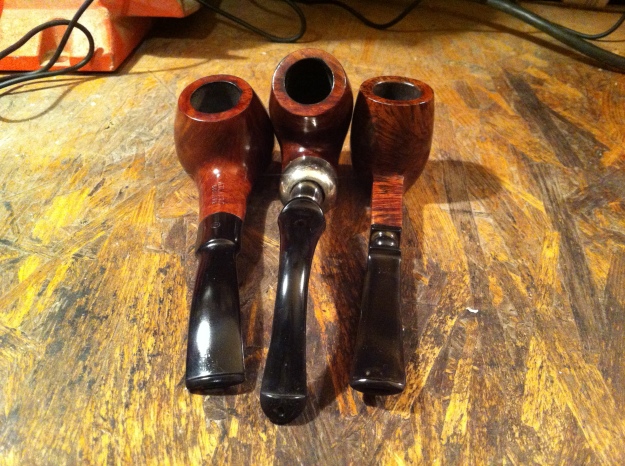
I was absolutely blown away with the outcome. These pipes are once again beautiful. I will give them many years of care and I know they will return the favor. If I could leave you with one thing to remember from this it would be that just because something looks run down and used up it might not be. With a little love, some patience, and whole lot of elbow grease you can bring it back to life, have fun doing it, and learn a whole slew of lessons in the process. If you have any questions I would love to help in any way that I can and I know Steve feels the same way. Take care and have a great day.
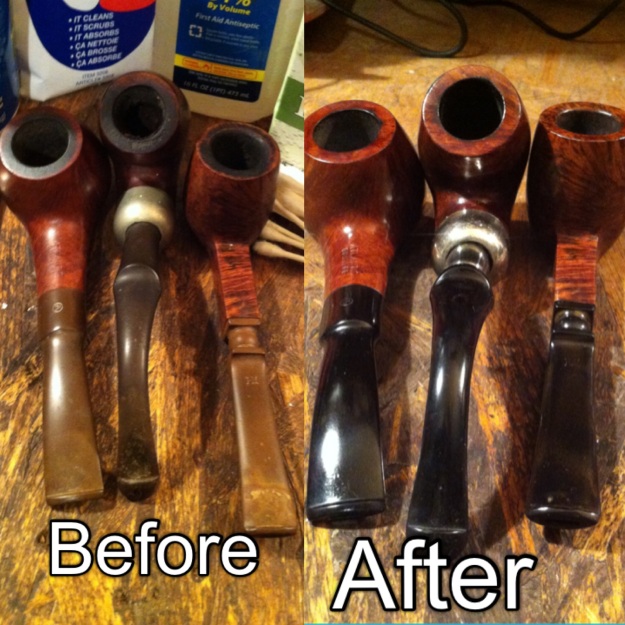
Cody Huey
http://www.codyhuey.com
codyjhuey@gmail.com


